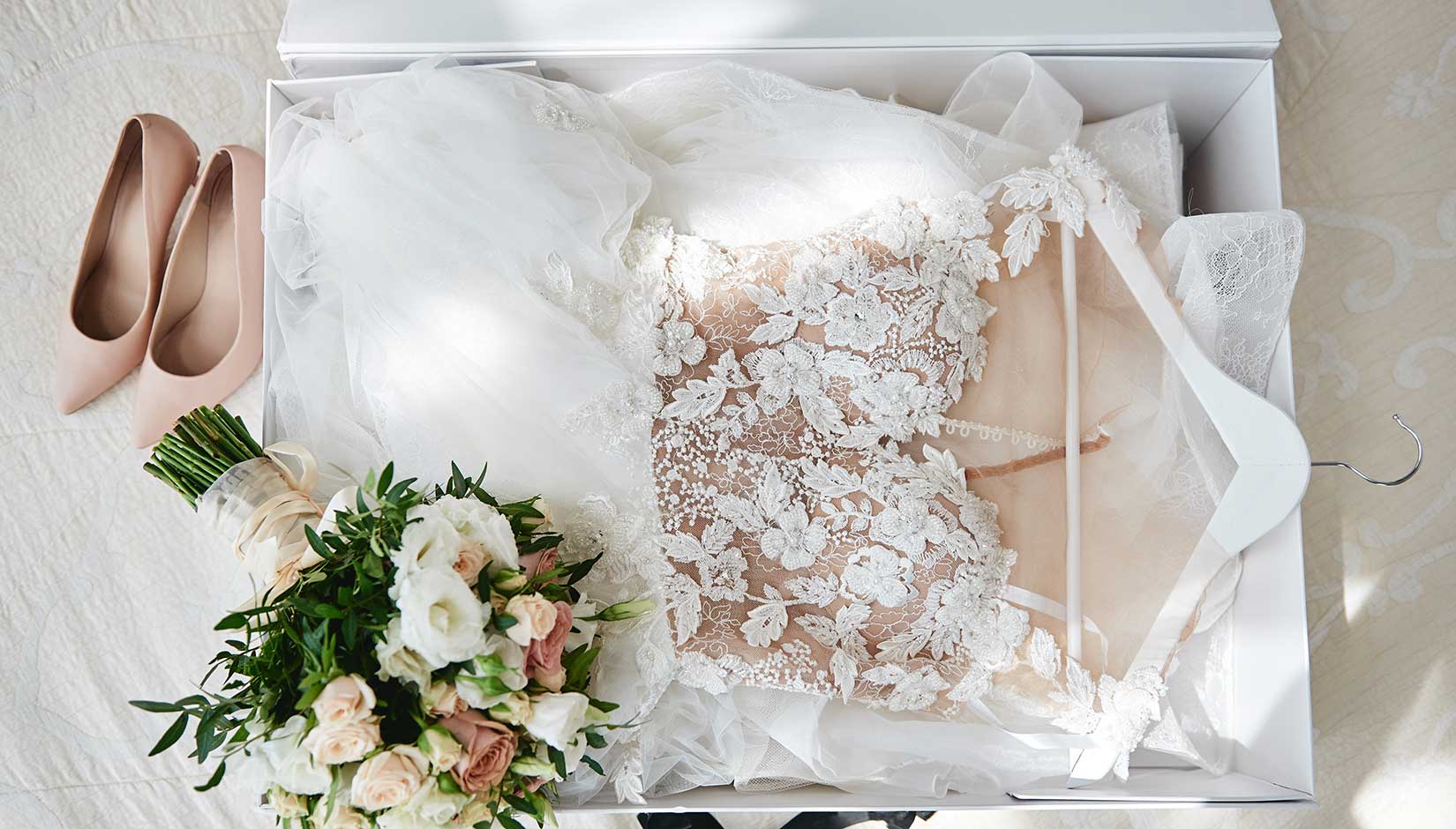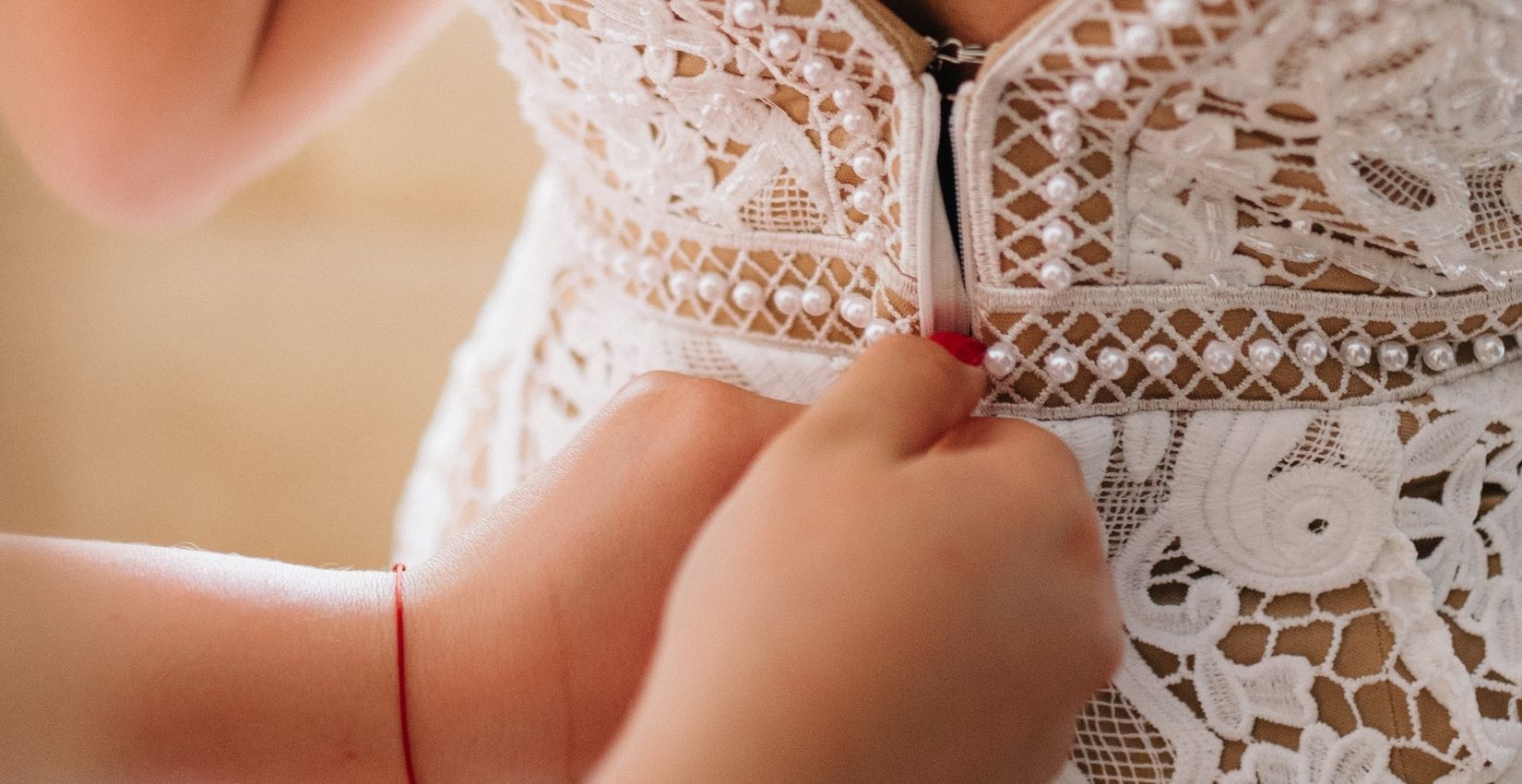
Six Reasons Why You Should Have Your Wedding Gown Dry Cleaned and Preserved
March 4, 2022
Wedding Dress Alterations Tips for You Should Know
April 26, 2022Doing your laundry is presumably not something you look forward to. Having said that, maintaining proper personal hygiene and looking good necessitates fairly clean clothes, so it appears you are in it for the long haul — to the tune of about 8 to 10 loads of laundry every week.
Since you are committed to a lifetime of laundering for all intents and purposes, why not simplify your laundry routine? The good thing is that it is not as tricky as it sounds. Here are a few tips to get you started:
Work with the perfect water temperature.
Most people set the water temperature once and then forget about it. This is a big mistake. If you do not set the water temperature for each laundry load, your electricity bill will surge up — it can also contaminate your clothes, making them look old and even ruin them.
So how do you choose the best water temperature for your specific laundry load?
- Read care symbols: Take some time to run your eye over the care instructions for each piece of clothing — doing so will help you find every information you need, including what water temperature to use. Paying attention to the instructions is even more important if you are unfamiliar with the process or if the clothing is new.
- Sort dirty laundry: After you have waded through the care symbols, sort your laundry by color, fabric type, weight, and washing requirements (cold, warm, or hot water).
- Use cold water first: If the read care label is missing or unclear, you can wash the piece of clothing with cold water. Using the cold water setting is safe in most cases as it causes the least amount of fabric damage — think shrinking and stretching, fading, or dye bleeding.
When to use hot water?
There are situations when hot water is needed to get the desired laundry results. It is particularly effective on excessively stained cotton clothes, bedding, and towels. Unfortunately, hot water can also cause colors to wash out, set food stains, and shrink certain types of fabrics.
When to use warm water?
Warm water is ideal for washing moderately soiled clothes and fabrics like nylon and polyester. Though warm water helps dissolve powder detergents and saves energy over hot water, it can also fade some colors and does not do okay when it comes to removing tough stains.
When to use cold water?
Cold water is perfect for washing delicate fabrics and dark colors that tend to bleed. It is the least likely to shrink or fade clothes and uses the least amount of energy. Be that as it may, it is less impressive at removing stains. We recommend pre-treating stains before washing stained clothes with cold water for the best results.
Choose the right laundry detergent.
Laundry detergents for general use are available in liquid, single-use, and powdered forms.
Liquid detergents are incredibly effective in removing grease or oil stains and can be used to pre-treat stains or spot cleaning. However, because of the difficult to read measuring markings on the liquid detergent bottle caps, most people end up wasting more detergent per load than they need. This is not only wasteful, but it can also leave white residue on washed clothes.
Single-use laundry detergent is the most convenient and user-friendly. Each single-use pack is pre-measured for consistent results — no risk of overdosing! They are, however, the most expensive to use per load of laundry, and you may need to use two packs to treat excessively soiled clothes or larger loads.
Powdered detergents are generally the least expensive per load. They also work particularly well on dirt and mud stains. The only problem with powdered detergents is that they do not dissolve completely in cold water — and much like liquid detergents, they can leave a white residue on washed clothes.
Go easy on the detergent.
Using too much detergent is one of the most common laundry mistakes. It may sound counterintuitive — but the more detergent you use (after a certain point), the dirtier your clothes get.
Laundry detergent certainly removes stubborn stains from your threads, but using too much can actually make things messier. The main culprit is the detergent residue that can turn your once soft and smooth wardrobes into a stiff and scratchy load of clothes. Too much detergent also sets off an overabundance of suds, which keeps your clothes from rubbing against one another, allowing dirt to stay trapped within.
For these reasons, we recommend starting with half the recommended amount and working your way up from there.
Tackle stains promptly.
The key to good stain removal is treating it before it sets. The faster you treat a stain, the greater your chances of completely removing it.
Those seemingly impossible stains — blood, wine, or coffee — are easy to get rid of when attacked from the right angle… and at the right time. As soon as you catch sight of a stain, flush it by holding the stained cloth wrong side up under cold running water. This should help you get the stain out of your piece of clothing. However, if the stain remains, use a laundry stain remover and toss the stained clothing into the washer.
Stop clothes from bleeding in the wash.
We have all seen what happens when a red sock is washed with white clothes — everything looks pink! Fortunately, there are a few easy ways to stop clothes from bleeding in the washer.
Start with a color test. Soak the clothing in a bucket of soapy water for about 30 minutes. If the water’s color has changed, the piece of clothing is not colorfast and may bleed in the wash.
Second, group clothes of similar colors together. Lighter-colored fabrics will be grouped together in one pile and darker-colored fabrics in a separate pile. If bleeding does happen, it will be tough to notice. It would help if you also sorted your clothes by weight since washing heavy and delicate clothes together can increase friction, which could lead to more bleeding. It goes without saying that sorting requires more work, but it is the most effective way to prevent color bleeding.
Lastly, consider washing your threads in cold water since hot water tends to dissolve dyes and cause clothes to bleed.
Careful with your delicates.
The most delicate clothes in your wardrobe — from lingerie to cashmere pullovers — should be hand-washed to maintain their shape and color and last longer.
First, sort your delicates into two piles — lights and darks. Sorting by color allows you to wash multiple delicates without the risk of fading or bleeding. In addition to sorting by color, you will need to sort by fabric. Your delicates may lose their form if you mix lace with cashmere or polyester with knitwear.
When washing delicates by hand, soak them in a solution of cold or warm water and mild detergent and swish for 3 to 5 minutes. Drain soapy water, rinse delicates until the water runs clear, and gently squeeze out excess water without wringing. Lay the item on a towel and roll it up, squeezing out excess water. Repeat with a dry towel before hanging on a drying rack.
When washing delicates in a washing machine, put your delicates in a mesh laundry bag, add a mild detergent, and use cold water on the delicate wash cycle. You must also separate delicates with zippers and metal snaps and hook to prevent damage to your delicates.
The care symbol is the best place to know how to clean your delicates. Unlike more durable pieces like cotton, delicate fabrics — such as silk, linen, polyester, rayon blends, and fine knits — will have “hand wash” or “dry clean” tags. While these terms do not preclude you from using your washing machine, they do require you to use extra caution while washing delicates. In doubt? Hand washing is the way to go.
Clean your washing machine.
If you did not already know, you must regularly clean your washing machine. How do you do that?
Set your washer to the largest load and hottest water temperature every couple of months. Allow the washer to agitate for a minute after adding a ½ cup of baking soda and 1 quart of white vinegar. Next, open the lid and let the mixture of vinegar and baking soda sit for an hour. Then, let the cycle finish and run a second hot water cycle to remove any remaining residue.
Have you been looking for a reliable laundry service in San Diego? Magic touch cleaners and alterations has all of your needs covered.




